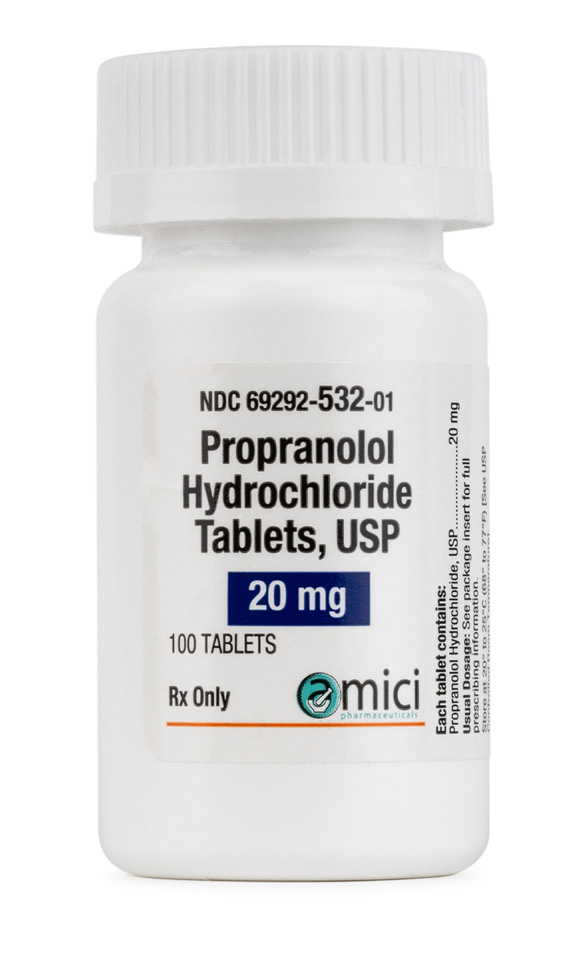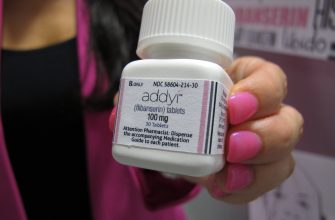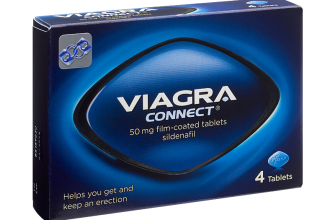Need to understand Propranolol 20mg tablets? Start with dosage: Always follow your doctor’s prescribed dosage. Never adjust the amount without consulting them. Incorrect usage can have serious consequences. This information supplements, not replaces, professional medical advice.
Common uses include managing hypertension and preventing migraine attacks. This medication blocks beta-adrenergic receptors, slowing your heart rate and relaxing blood vessels. Side effects vary; some experience nausea, dizziness, or fatigue. Consult your physician about any concerning symptoms.
Important considerations: Inform your doctor about all other medications you take, including over-the-counter drugs and supplements. Propranolol may interact with other drugs. Also, discuss pre-existing conditions, like asthma or heart problems, as Propranolol might affect them. Pregnancy and breastfeeding also require specific discussion with your doctor before starting treatment.
Remember: This information provides a basic overview. Always consult your physician or pharmacist for detailed guidance concerning your specific needs and health situation. Self-medicating with Propranolol is dangerous and should be avoided. Seek professional medical help immediately for any adverse reactions.
- Propranolol Tab 20mg: A Detailed Overview
- What is Propranolol and How Does it Work?
- Common Uses of Propranolol 20mg Tablets
- Heart Conditions
- Other Uses
- Important Note:
- Dosage and Administration Guidelines for Propranolol 20mg
- Adjustments and Considerations
- Missed Doses
- Potential Side Effects and Precautions
- Common Side Effects
- Less Common but Serious Side Effects
- Precautions
- Driving and Operating Machinery
- Drug Interactions with Propranolol 20mg
- When to Consult a Doctor Regarding Propranolol Use
Propranolol Tab 20mg: A Detailed Overview
Propranolol 20mg tablets are a beta-blocker commonly prescribed to manage several health conditions. They work by blocking the effects of adrenaline, slowing your heart rate and relaxing blood vessels. This makes them effective for treating hypertension (high blood pressure), angina (chest pain), and certain types of tremor.
Common side effects include fatigue, dizziness, nausea, and diarrhea. These usually subside as your body adjusts to the medication. Serious side effects are rare but include breathing problems and severe allergic reactions. Seek immediate medical attention if you experience these.
Dosage varies depending on your condition and individual response. Your doctor will determine the appropriate dose and schedule. Always follow your doctor’s instructions precisely. Do not abruptly stop taking propranolol without consulting your doctor, as this can lead to withdrawal symptoms.
Before starting propranolol, inform your doctor about all medications you are currently taking, including over-the-counter drugs and supplements. This is particularly important for medications affecting heart rate or blood pressure. Also, disclose any pre-existing medical conditions, such as asthma or heart problems.
Proper storage is vital. Keep propranolol tablets in a cool, dry place, away from direct sunlight and moisture. Always check the expiry date before use. Dispose of expired medication properly according to local regulations.
Regular monitoring of your blood pressure and heart rate is recommended while taking propranolol. Your doctor will schedule check-ups to evaluate your progress and adjust your dosage if needed. Open communication with your doctor is crucial for optimal treatment results.
This information provides a general overview and should not replace professional medical advice. Always consult your physician or pharmacist for personalized guidance regarding Propranolol 20mg tablets.
What is Propranolol and How Does it Work?
Propranolol is a beta-blocker medication. It lowers your heart rate and blood pressure by blocking the effects of adrenaline and noradrenaline, hormones that speed up your heart and constrict your blood vessels. This action reduces the workload on your heart.
Specifically, propranolol works by binding to beta-adrenergic receptors in the heart and blood vessels. This prevents these receptors from receiving signals from adrenaline and noradrenaline, thus reducing their stimulatory effects.
The result is a slower heart rate, lower blood pressure, and reduced force of heart contractions. This makes propranolol useful in treating conditions like high blood pressure, angina (chest pain), and some types of irregular heartbeats.
Beyond cardiovascular benefits, propranolol also finds application in managing performance anxiety and tremors associated with conditions like essential tremor. Its ability to calm the nervous system contributes to this broader therapeutic range.
Dosage and treatment duration depend entirely on the specific condition and your doctor’s assessment. Always follow your physician’s instructions carefully, reporting any side effects experienced.
Common Uses of Propranolol 20mg Tablets
Propranolol 20mg tablets primarily manage several conditions by slowing your heart rate and relaxing blood vessels.
Heart Conditions
- High blood pressure (hypertension): Propranolol reduces the force and rate of your heartbeat, lowering blood pressure. Regular use, as prescribed, is key to managing hypertension.
- Angina: It decreases the heart’s workload, reducing chest pain caused by reduced blood flow to the heart muscle. You’ll experience fewer angina attacks with consistent medication.
- Heart rhythm problems (arrhythmias): Propranolol helps regulate irregular heartbeats, stabilizing heart rhythm. Consult your doctor about the specific arrhythmia and its treatment.
Other Uses
- Migraines: Propranolol can help prevent migraine headaches by reducing the frequency and severity of attacks. Consistent use is usually needed for prevention.
- Essential tremor: This medication reduces the shaking associated with essential tremor. Noticeable improvement may take time, depending on individual response.
- Anxiety disorders: In some cases, doctors may prescribe propranolol to control physical symptoms of anxiety, such as rapid heartbeat and trembling, particularly for performance anxiety. It does not treat the underlying anxiety disorder.
- Hyperthyroidism (overactive thyroid): Propranolol helps manage symptoms like rapid heartbeat and tremor until thyroid medication takes full effect. It’s a temporary measure to manage symptoms, not a cure.
Important Note:
This information is for general knowledge only and does not substitute professional medical advice. Always consult your doctor before starting or changing any medication. They can assess your individual needs and determine the correct dosage and treatment plan.
Dosage and Administration Guidelines for Propranolol 20mg
Always follow your doctor’s prescribed dosage. Typical starting doses for adults range from 10mg to 40mg, taken twice daily. Your doctor will adjust your dosage based on your individual needs and response to treatment. Some conditions may require higher doses, while others may need lower ones.
Adjustments and Considerations
Dosage adjustments are common. Your doctor might increase or decrease your dose gradually depending on your blood pressure, heart rate, and overall response. Certain factors, such as age, liver or kidney function, and other medications you’re taking, can influence the appropriate dosage. Never adjust your dosage without consulting your physician. Take propranolol with a glass of water. You can take it with or without food, but maintaining consistency is helpful for predictable medication levels.
Missed Doses
If you miss a dose, take it as soon as you remember, unless it’s almost time for your next dose. Do not double the dose to catch up. Contact your doctor if you frequently miss doses or have trouble remembering to take your medication.
Potential Side Effects and Precautions
Propranolol can cause several side effects. Always discuss any concerns with your doctor.
Common Side Effects
- Dizziness or lightheadedness: This is often temporary and improves as your body adjusts. Change positions slowly to minimize this effect.
- Nausea or vomiting: These side effects are usually mild and self-limiting. Consider smaller, more frequent meals.
- Fatigue: Get adequate rest. Discuss this with your doctor if it significantly impacts your daily life.
- Cold hands and feet: Dress warmly and avoid prolonged exposure to cold temperatures.
- Slowed heart rate (bradycardia): Your doctor will monitor your heart rate. Report any significant slowing.
- Sleep disturbances: Maintain a consistent sleep schedule and discuss sleep aids with your physician if needed.
Less Common but Serious Side Effects
- Severe allergic reactions (rash, itching, swelling, difficulty breathing): Seek immediate medical attention.
- Bronchospasm (wheezing, shortness of breath): This is more likely in individuals with asthma or other respiratory conditions. Inform your doctor.
- Low blood pressure (hypotension): Monitor your blood pressure regularly and report any significant drops.
- Depression or worsening of depression: Monitor your mental health and discuss any changes with your doctor.
- Hallucinations: Consult your physician immediately if you experience hallucinations.
Precautions
Before starting Propranolol, inform your doctor about:
- Allergies, including drug allergies.
- Pre-existing medical conditions, particularly heart problems, lung disease, liver or kidney disease, and diabetes.
- Other medications you are taking, including over-the-counter drugs and herbal supplements.
- Pregnancy or breastfeeding plans.
Avoid alcohol while taking Propranolol, as it can worsen side effects such as dizziness and lightheadedness.
Driving and Operating Machinery
Propranolol may cause dizziness. Avoid driving or operating machinery until you know how this medication affects you.
Drug Interactions with Propranolol 20mg
Propranolol, while effective, interacts with several medications. Understanding these interactions helps ensure your safety and treatment efficacy.
Always inform your doctor about all medications you’re taking, including over-the-counter drugs and supplements. This includes herbal remedies.
Here are some key drug interaction categories:
| Drug Class | Interaction Type | Potential Effects |
|---|---|---|
| Calcium Channel Blockers (e.g., verapamil, diltiazem) | Additive effects on heart rate and blood pressure | Increased risk of bradycardia (slow heart rate) and hypotension (low blood pressure) |
| Insulin and Oral Hypoglycemics | Increased hypoglycemic effect | Monitor blood sugar levels carefully; dosage adjustments may be needed. |
| Cimetidine (antacid) | Increased propranolol levels | Increased risk of side effects; your doctor might adjust your propranolol dose. |
| MAO Inhibitors (e.g., phenelzine, tranylcypromine) | Increased risk of hypotension | Use with caution; close monitoring of blood pressure is critical. |
| Sympathomimetics (e.g., epinephrine, norepinephrine) | Reduced effects of sympathomimetics | Propranolol can counteract the effects of these drugs; careful monitoring is needed. |
| Warfarin | Increased bleeding risk | Close monitoring of INR levels is recommended. |
This table provides a summary; a full list is too extensive for this section. Consult your physician or pharmacist for a detailed interaction profile tailored to your specific medications and health status. They can provide personalized guidance on managing potential drug interactions safely.
When to Consult a Doctor Regarding Propranolol Use
Contact your doctor immediately if you experience chest pain, shortness of breath, or severe dizziness. These could indicate serious heart problems.
Seek medical attention if you notice a significant change in your heart rate or rhythm, including unusually slow or fast heartbeats. Regular monitoring helps ensure safe usage.
Report any new or worsening symptoms, such as fatigue, weakness, cold hands and feet, or swelling in your ankles or legs. These may signal underlying issues requiring attention.
Discuss potential drug interactions with your physician before starting Propranolol, especially if you take other medications for heart conditions, diabetes, or depression. Careful review prevents complications.
If you experience unusual tiredness, sleep disturbances, vivid dreams, or hallucinations, contact your doctor. These are possible side effects requiring evaluation.
Schedule a check-up with your doctor for regular monitoring of blood pressure and heart function, especially if you have pre-existing conditions. This helps track response and potential complications.
Always inform your doctor of any allergies or other medical conditions before starting Propranolol. Open communication is key to safe treatment.
If you experience skin reactions like rash or itching, stop taking Propranolol and consult your doctor promptly. This could be an allergic reaction needing immediate attention.
Pregnancy or breastfeeding require discussion with your physician about Propranolol’s potential effects. They can assist in finding the safest approach for both mother and child.










